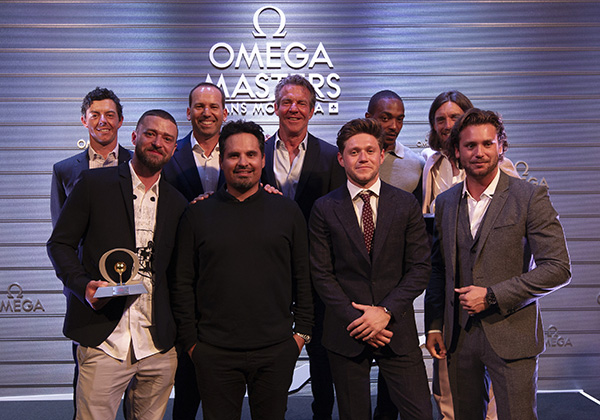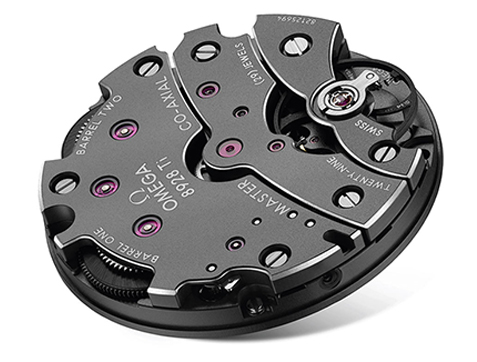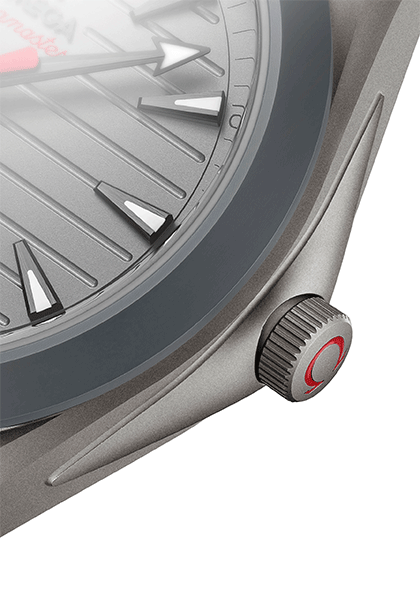The Omega Seamaster Aqua Terra Ultra-Light was announced a couple weeks ago, and there were enthusiasts who really made a big deal out of it and cynics who felt like it was their duty to make everyone feel bad about liking this watch. In case it isn’t already clear, I don’t like cynicism. I think it’s too easy to be cynical, and the Ultra-Light is something that a lot of people worked really hard on, and it deserves better.

So, I went up a 2,000m mountain in Valais to talk to Gregory Kissling, Omega’s technical powerhouse and all-round brainiac, about it. It was kind of like those kung-fu movies where a wide-eyed novitiate goes in search of the white-bearded sage in his mountaintop hermitage, except that this was actually a fairly sophisticated event attended by Hollywood stars and golfing legends, while Greg and I basically stood around a fire, eating marshmallows and talking about nerd stuff. (Because we are nerds.)

Here’s what I learned about the Omega Seamaster Aqua Terra Ultra-Light, and I’m telling you this stuff because you should know it too.
Yes, the watch is light. It’s light because it’s made of titanium. What makes it better than other titanium watches? The type of titanium. Gamma titanium, as the case material is called, is not a titanium variant exactly, but a titanium alloy containing aluminium. It has exceptional mechanical properties and resistance to oxidation and corrosion.
Further improving the performance of this material is the manufacturing process, a form of powder metallurgy which improves material isotropy and structural integrity. The thing about powder metallurgy is that it provides an extremely high level of control and predictability over the final product. Small variations in the process, like changing grain size, temperature or pressure, can produce a wide range of results — even with the exact same material. It’s also very expensive, you guys, in case you’re wondering about the Ultra-Light’s 40 grand price tag.

The fundamental question at the base of all luxury purchases: Why choose the expensive thing? In this particular situation, the answer is: Because it’s better. One of the biggest concerns in the secondary market at the moment, especially with historically significant watches, is the condition of the watch. The Ultra-Light is gonna look fresh for a long time, and that’s something that really takes care of a genuine consumer need.
Something I’ve heard floating around is the observation that some other companies have used titanium-aluminium alloys in their watches before. However, I will say that Omega is the only company that have publicly discussed the composition and manufacturing process of the alloy they’ve used, so unless we know for a fact that both composition and process are the same in those other watches, there’s nothing to compare here.
Another thing — the Ultra-Light’s titanium movement. This is industry standard Grade 5 titanium (side note: Grade 2 used to be industry standard years ago, but times change and we’ve all moved up a few grades) with a bonus. The movement is actually ceramised titanium, which I’m hearing some people say is a coating. It is not a coating, you guys. A coating is applied. Ceramised titanium undergoes a chemical catalytic treatment in which the titanium atoms on the surface of the material are transformed into a ceramic (probably titanium carbide, but we’d had a few drinks by this point in the discussion so I’m gonna get back to you if I turn out to be wrong on this).

Oh yeah, the telescopic crown is really cool too. Don’t bash it until you’ve seen it. But also please don’t bash it when you do see it. Don’t forget, it costs 40 grand.

Look, I like Omega. I like them a lot. What I don’t like is how people don’t seem to know how innovative they are. Or if they do know it, they tend to overlook it in favour of a piece of Omega history. And I’ll admit, the Moonwatch is extremely cool and historic and all that stuff. Personally, I have my eye on a particular Speedmaster (not telling you which one, although it can’t be hard to figure out). But it just makes people think that Omega are banking on past glories to carry them forwards, when nothing could be further from the truth.
The truth is, a major percentage of innovations that have been propagated throughout Swatch Group have begun at Omega. Just to take the most obvious example — Liquidmetal, which pioneered at Omega and was later seen in the amorphous-metal resonator in the Breguet Classique La Musicale and in the depth gauge of Blancpain’s ambitious diving watch the X Fathoms.

In recent years we’ve seen Omega pushing out seriously impressive stuff like their anti-magnetic technology — which everyone calls the 15,000 Gauss technology, but I would just like to point out that it is actually more than 15,000 Gauss, since that figure is simply the limit of current testing equipment. This technology involved a whole fleet of less well-known, but equally ground-breaking material innovations such as Nivagauss (to this day I still can’t get anyone at Omega to speak to me on the record about the composition of Nivagauss).
We had Omega’s Sedna Gold, their fade-resistant red-gold alloy, and Moonshine Gold, the spectacularly attractive yellow-gold alloy. Honestly, the amount of innovation taking place at Omega is off the charts. And if you didn’t know that before, well now you do.





